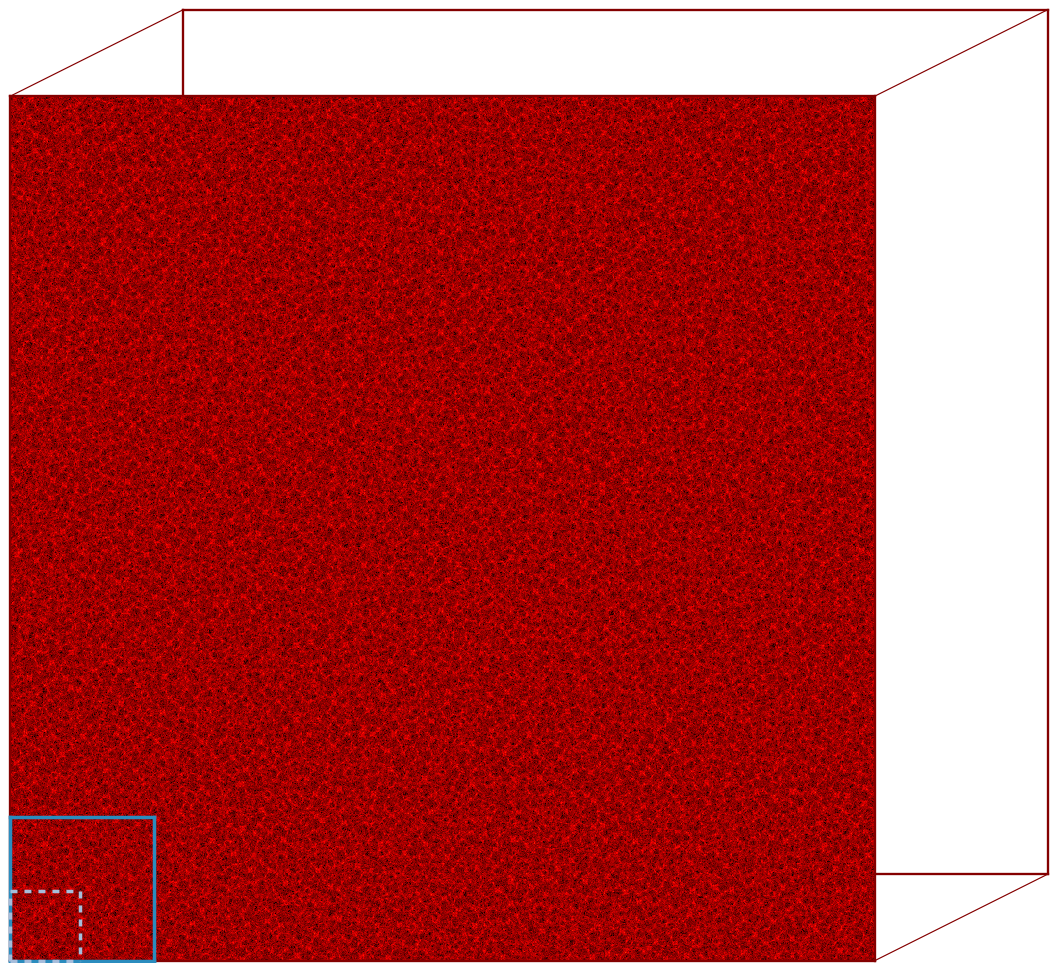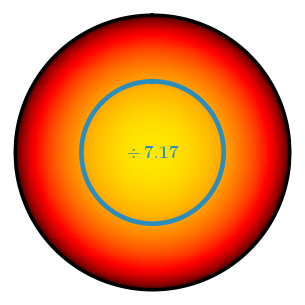Data Guide | Millennium-XXL
This simulation is good for ...
- Light-Cone datasets extending to high redshift
- Probing Gpc scales
Overview
The Millennium-XXL (MXXL) N-body simulation uses the same cosmological parameters as the original Millennium simulation, but in a volume 63=216 times as large. Despite the increase in particle number as well, this comes at the cost of a lower mass resolution by a factor of ~7. The simulation was run with a modified version of GADGET3. Further details on the simulation can be found in the paper by Angulo et al. (2012). Currently on TAO, MXXL data products exist as Premade catalogues. These include 2 Light-Cones: one that extends to z=2.2 for halo properties, and one that extends to z=0.8 and includes galaxy properties as assigned by a Halo Occupation Distribution model. These Light-Cones are fully detailed by Smith et al. (2017).
Relative size
- Box length: 3000 h^-1 Mpc
The volume relative to Millennium and an all-sky survey out to z=0.05:

Mass resolution
- Particle mass: 6.17 × 10^9 h^-1 Msun
- Gravitational softening: 10 h^-1 kpc
- Number of particles: 6729^3
The particle size compared to Millennium:

MXXL has 7.17 times lower mass resolution than Millennium, meaning a Millennium halo contains 7.17 times the number of particles of an MXXL halo of equivalent mass.
Cosmology
The cosmological parameters of the Millennium family of simulations, including Millennium-XXL, are based on WMAP-1 data (Spergel et al. 2003) and the 2dF Galaxy Redshift Survey (Colless et al. 2001).
- Ω_M = 0.25
- Ω_Λ = 0.75
- Ω_b = 0.045
- σ_8 = 0.9
- n = 1
- h = 0.73
Haloes
Haloes and subhaloes were identified using SUBFIND, with further details outlined in Angulo et al. (2012).